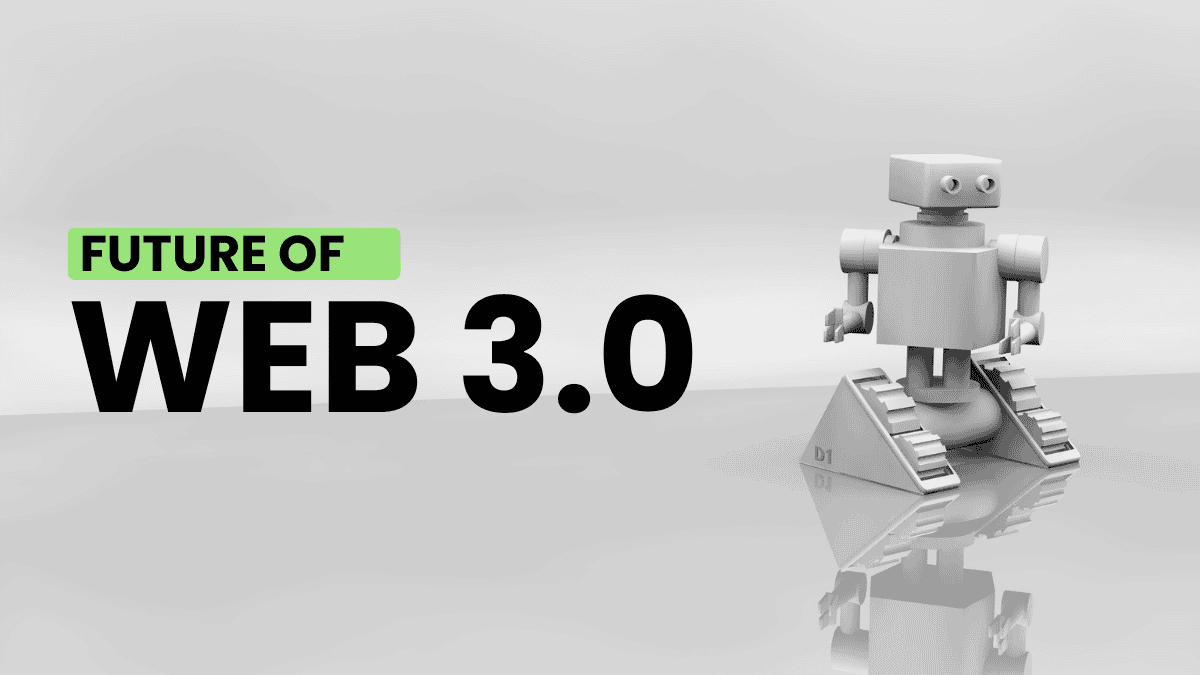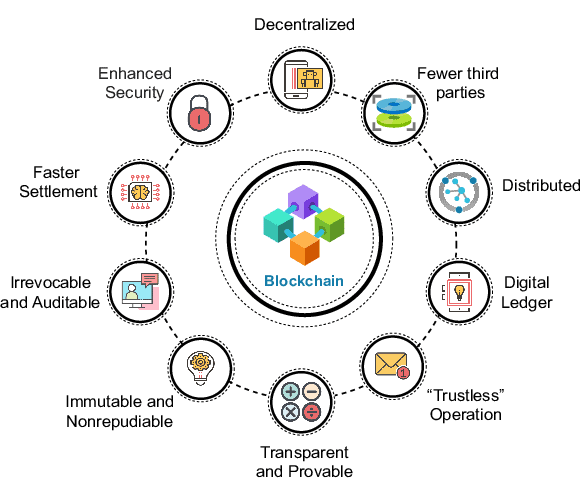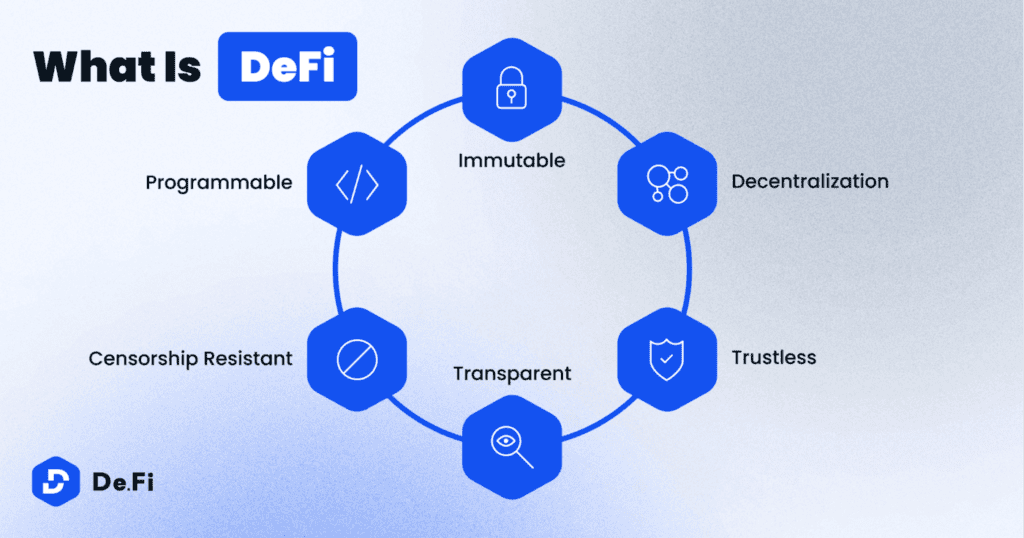
In the world of the internet and technology that keeps changing, there’s something big on the way – it’s called Web3. Think of it as a significant leap forward, not just a small step. As we get closer to the year 2024, it’s an excellent time to dig deeper into Web3. We’ll learn what it is, how it works, and what it might mean for the future of our digital lives.
So, let’s dive in and discover the important parts of Web3, what cool things it can do, and how it might change the way we use the internet.
Understanding Web3
To understand where Web3 is headed, it’s crucial to know what it’s built upon. They call Web3 the “decentralized web,” which means it’s not like the web we use now (Web2). The web we’re used to relies a lot on big companies and middlemen. Web3, on the other hand, wants to make the internet more open, less controlled by a few, and all about the people who use it. It’s like giving more power to the users themselves.
![[your-subject] - EyeUniversal](https://www.eyeuniversal.com/wp-content/uploads/2024/07/Web-2-vs-web-3-1.jpg)
Here decentralized web is a very important term to understand Web3 and all the terms we are going to mention here. So, let’s break down the idea of a “decentralized web” in simple terms.
Imagine the internet as a big library, and the books in that library are the websites and information we use online. Now, in the current web (Web2), this library is controlled by a powerful librarian (like a big company, such as Facebook or Google). This librarian decides which books are in the library, who can access them, and even monitors what people read.
In contrast, the decentralized web (Web3) envisions a library where there’s no single librarian in charge. Instead, it’s managed by a community of book lovers (users). Each person in this community can contribute books (websites) to the library and decide how they want to share them. No one person or entity has ultimate control.
After getting a basic idea of Web3, let’s take a look at the technologies it will be based on.
5 Technologies Making the Web 3 Exciting
Web3 involves a few technologies, including:
Blockchain Technology
At the heart of Web3 lies blockchain technology, a distributed ledger system that records transactions across a network of computers. This technology forms the basis for many Web3 applications.
“The blockchain is an incorruptible digital ledger of economic transactions that can be programmed to record not just financial transactions but virtually everything of value.” – Don & Alex Tapscott
Blockchain’s decentralization ensures that no single entity has control over the data or the network, increasing transparency, security, and trust. In 2024, blockchain will continue to be a driving force behind Web3, with advancements in scalability, interoperability, and sustainability.
Moreover, it can also lead to significant cost savings for financial institutions. By adopting blockchain technology, these institutions could save up to $12 billion every year. According to CBInsights, the shift of securities to blockchains could result in an annual reduction of $17 billion to $24 billion in global trading processing fees.

Blockchain simply is a digital notebook that records transactions. This notebook isn’t kept by one person; it’s shared among lots of people all over the world. When someone does something, like buying or selling something online, everyone writes it down in their notebook. This way, there’s a record that’s the same for everyone, and it’s really hard to change or cheat.
Why is Blockchain Important in Web3?
This digital notebook called a blockchain, is like the backbone of Web3. It’s what keeps track of everything that happens on the internet. When you use Web3 applications, like buying digital art or trading cryptocurrency, these actions get written in the blockchain.
Why is Decentralization Important?
Since nobody’s in charge of this notebook (blockchain). It’s not owned by a single company or government. It’s shared by lots of people, making it really hard for anyone to control or manipulate. This means the information on the blockchain is super reliable, secure, and transparent because everyone can check it.
Smart Contracts
Smart contracts are self-executing contracts with the terms of the agreement directly written into code.
Think of smart contracts as super-smart computer programs. These programs have the rules of an agreement written right into them. So, if certain conditions are met, the program automatically does what it’s supposed to, like transferring money or giving access to something.
![[your-subject] - EyeUniversal](https://www.eyeuniversal.com/wp-content/uploads/2024/07/Traditional-vs-smart-contracts.png)
Smart contracts can do things automatically without needing a middleman, like a bank or a lawyer. This makes things faster, cheaper, and more trustworthy. You don’t have to worry if someone will do their part; the program takes care of it.
In 2024, smart contracts will find applications in various industries, such as finance, healthcare, and supply chain management, revolutionizing the way we transact and do business.
NFTs: Digital Ownership and Creativity
NFTs are like special certificates for digital stuff. They make digital things like art, music, and even virtual land unique and valuable. It’s like having a badge that says, “I own this!”
Digital Ownership
With NFTs in Web3, when you own one, it’s like having a super-safe record that says, “This is yours!” Imagine you have a certificate for a rare comic book. Nobody can take it away, and everybody knows it’s yours because it’s written in a special digital book that everyone can see. This means artists and creators can sell their stuff directly to fans, without needing a middle person.

Web3 gives artists and creators new ways to make money. In 2024, musicians can sell special NFT tickets that let fans access their exclusive music. Artists can turn their art into NFTs and sell them, just like selling a painting. And even virtual lands in online games can be bought and sold as NFTs. This makes digital stuff more valuable and changes how we buy and enjoy things on the internet. It’s like a whole new world of possibilities!
Decentralized Finance (DeFi): Banking Without Banks
As per Simplilearn “When the Web 3 will arrive the financial services will be fully automated, decentralized, and trustless, with no central entity controlling the system.“
DeFi stands for “Decentralized Finance.” It’s like banking but without traditional banks. Instead, it uses computer programs and smart contracts to do financial stuff.

Banking Without Banks
In Web3’s DeFi, you can do things like lend your money, borrow some, trade cryptocurrencies (like Bitcoin), and even earn interest, all without going through a regular bank. You can do this right from your computer or phone. This makes it fairer for everyone and helps more people get into the financial game.
Making Money with DeFi in 2024
DeFi isn’t just about regular stuff; it’s also about new ways to make money. Imagine you have a little digital farm, and you plant cryptocurrencies. In DeFi, you can do something like that, called “yield farming.”
It means you can earn rewards and interest by being part of DeFi programs. In 2024, we’ll see even more of these DeFi projects, and they’ll be easier to use, which makes DeFi a big deal in Web3 finance. It’s like growing your own money tree but on your computer!
Metaverse: Future of Internet or Just a Video Game?
On Wired there is one article entitled “What Is the Metaverse, Exactly?” and it begins with “When tech CEOs like Mark Zuckerberg or Satya Nadella discuss it, they describe the metaverse as the future of the internet. Or it could be a video game. Or perhaps it’s a more awkward and worse version of Zoom? It’s difficult to define”.
In the same article, Mark Zuckerberg said “The metaverse will be the next generation of the internet, a space where physical and digital realities merge”.
Think of the metaverse as a super-cool, make-believe world online. It’s like a huge, shared video game where you and your friends can play together, but it feels real. You can do all sorts of fun stuff and even create your own adventures.
Virtual Reality and Web3
Web3, with its cool tech, makes this metaverse even cooler. It’s like making the video game world super connected. You can own and trade stuff in this make-believe world, like special game items, just like you do with collectible cards. Imagine going to a virtual concert, buying a virtual house, or even having a job in this online world. It’s like playing your favorite game, but you can actually own the things in it!
Identity and Digital Ownership
In this metaverse, who you are and what you own are really important. Web3 makes sure you have control over your online self and the things you have. It’s like having a super-secure key to your character in the game. In 2024, we’ll see even cooler stuff, like special ways to prove who you are and fun avatars (that’s like your online character) that you can use to represent yourself. It makes the online world safe and fun to explore.
Challenges and Considerations
As Web3 continues to evolve, there are essential challenges and considerations to keep in mind:
Scalability – Making It Work Faster
Web3 is like a super busy road, and sometimes, there’s too much traffic for it to handle. This can slow things down. In 2024, they plan to fix this by adding special technology (layer 2 solutions) and making the way things agree (consensus algorithms) better. It’s like widening the road to handle more cars.
Regulation – Making Rules
As Web3 becomes more popular, governments will want to make rules for it, just like they do for cars on the road. It’s important to find the right balance between letting people create cool things and making sure they follow the rules. This will be a big deal in 2024 and beyond.
User Experience – Making It Easy
To get more people using Web3, it has to be easy to understand and use. In 2024, they’ll make the buttons and screens (user interfaces) simpler, so it’s like using your favorite app. They’ll also make it easier for new folks to start using Web3 (onboarding). It’s like making sure everyone can drive a car without too much trouble.
Web3 VS. Web 3.0
Despite all its promise on paper, sometimes it feels like a fox. Most technologies are still in the early development stage, and it is very unlikely that all or most of them will be capable and advanced enough to support this technology upgrade by 2024.
Tim Berners-Lee, the inventor of the World Wide Web, doesn’t believe that blockchain is the right solution for building the next version of the internet. He has his own project called Solid for Web Decentralization.
He clarified that Web3, a term used by Ethereum folks for their blockchain work, is not the actual web. The term Web3 is often used to describe a future version of the internet that’s more decentralized and not controlled by major players like Amazon, Microsoft, and Google.
Berners-Lee believes that while blockchain protocols might be good for some things, they’re not suitable for Solid as they’re too slow, expensive, and public. He insists that personal data stores need to be fast, cheap, and private.
He also mentioned that people often confuse Web3 with “Web 3.0,” his own proposal for reshaping the internet. His startup, Inrupt, aims to give users control over their own data. It plans to do this through a global “single sign-on” feature, login IDs for data sharing, and a “common universal API” for apps to pull data from any source.
Critics also argue that Web3 is prone to issues associated with cryptocurrencies like fraud and security flaws.
Conclusion: Embracing a Decentralized Future
Whether Web3 is Web 3.0 or not, it is just around the corner. Web3 represents a profound shift in the way we interact with the internet, from ownership and creativity to finance and virtual reality. As we look ahead to 2024, the future of Web3 is filled with promise and potential.
While challenges persist, the continued development of
